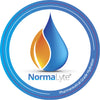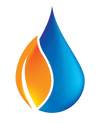Hydration vs. Overhydration: What POTS Patients Need to Know


If you’re living with POTS (Postural Orthostatic Tachycardia Syndrome), you already know that staying hydrated is essential. But what if we told you that too much plain water could actually make you feel worse? That’s right—overhydration is a real risk, especially for people with POTS, and it’s just as important to recognize as dehydration.
Let’s break down the difference between hydration and overhydration, and explain why sodium and electrolytes—not just water—are critical to managing POTS symptoms.
💧 The Basics of Hydration with POTS
Most people with POTS deal with dehydration, whether they realize it or not. Blood volume tends to be lower in people with dysautonomia, and symptoms like dizziness, fatigue, and brain fog can all get worse when you’re not properly hydrated.
This is why doctors often recommend high fluid intake and increased salt to help expand blood volume. But it’s not just about drinking gallons of water—how you hydrate matters just as much as how much.
⚠️ The Dangers of Overhydration: Hyponatremia
If you’re drinking tons of water without replacing electrolytes, especially sodium, your blood can become too diluted. This condition is known as hyponatremia—a serious imbalance where sodium levels in the blood drop too low.
Symptoms of hyponatremia can mimic or worsen POTS symptoms, including:
-
Headache
-
Nausea
-
Weakness
-
Confusion
-
Muscle cramps
-
Fatigue
In severe cases, it can lead to seizures or hospitalization. This is why balancing fluids with adequate sodium intake is so crucial for people with POTS.
🧂 Why Sodium Matters for POTS Hydration
Sodium helps your body retain water, regulate blood pressure, and improve circulation—three things that are often impaired in those with dysautonomia.
So, when you drink only plain water, your body may not be able to hold onto it effectively. You might end up peeing it out just as fast, and your symptoms could remain the same—or worsen.
This is where Oral Rehydration Salts (ORS) come in.
✅ What is ORS, and Why is it Better Than Just Water?
Oral Rehydration Salts are scientifically formulated to include the optimal ratio of sodium, glucose, and other key electrolytes to support rapid fluid absorption in the body.
NormaLyte ORS follows the World Health Organization’s gold standard formula and is specifically created for people with chronic conditions like POTS who require daily electrolyte support.
Unlike water or sports drinks:
-
NormaLyte is clinically proven to help manage symptoms of POTS
-
Contains no dyes or preservatives, and no artificial sweeteners in its PURE formula
-
Supports faster and longer hydration at the cellular level
🔄 How to Balance Your Hydration
Instead of just increasing water intake, POTS patients should aim to:
-
Hydrate strategically—start your day with an ORS like NormaLyte to build a hydration base.
-
Avoid plain water in excess—alternate with electrolyte-rich drinks.
-
Salt smart—don’t just eat salty snacks, use products formulated for absorption.
-
Listen to your body—fatigue, headache, and nausea may signal overhydration or poor electrolyte balance.
🌟 Final Thoughts: Hydrate the Right Way
It’s easy to assume more water = better hydration, but for POTS patients, hydration needs to be smarter, not just more.
Combining water with the right electrolyte support—like NormaLyte ORS—can help you avoid hyponatremia, manage chronic dehydration, and feel more stable throughout your day.
Drink up—but don’t forget the salt!






Leave a comment